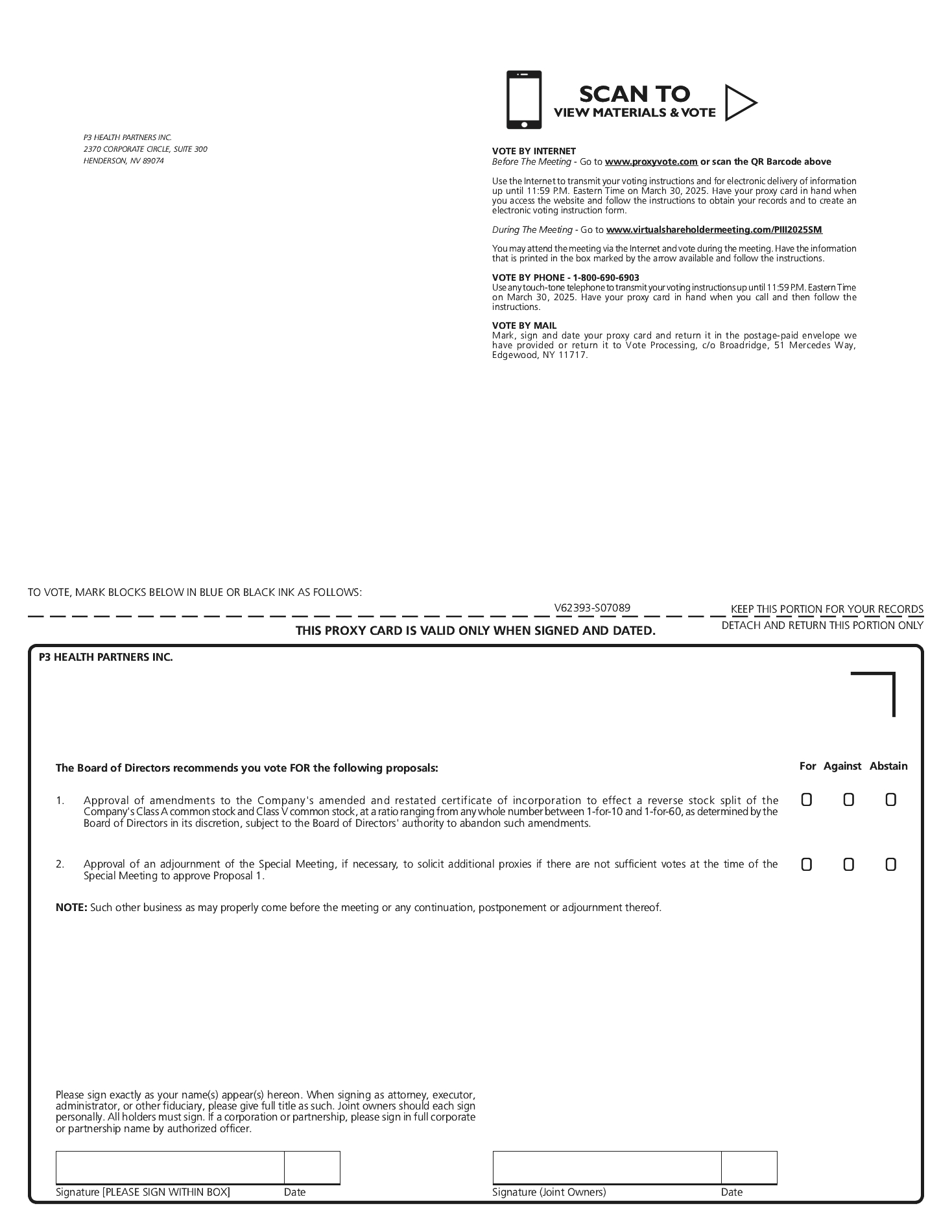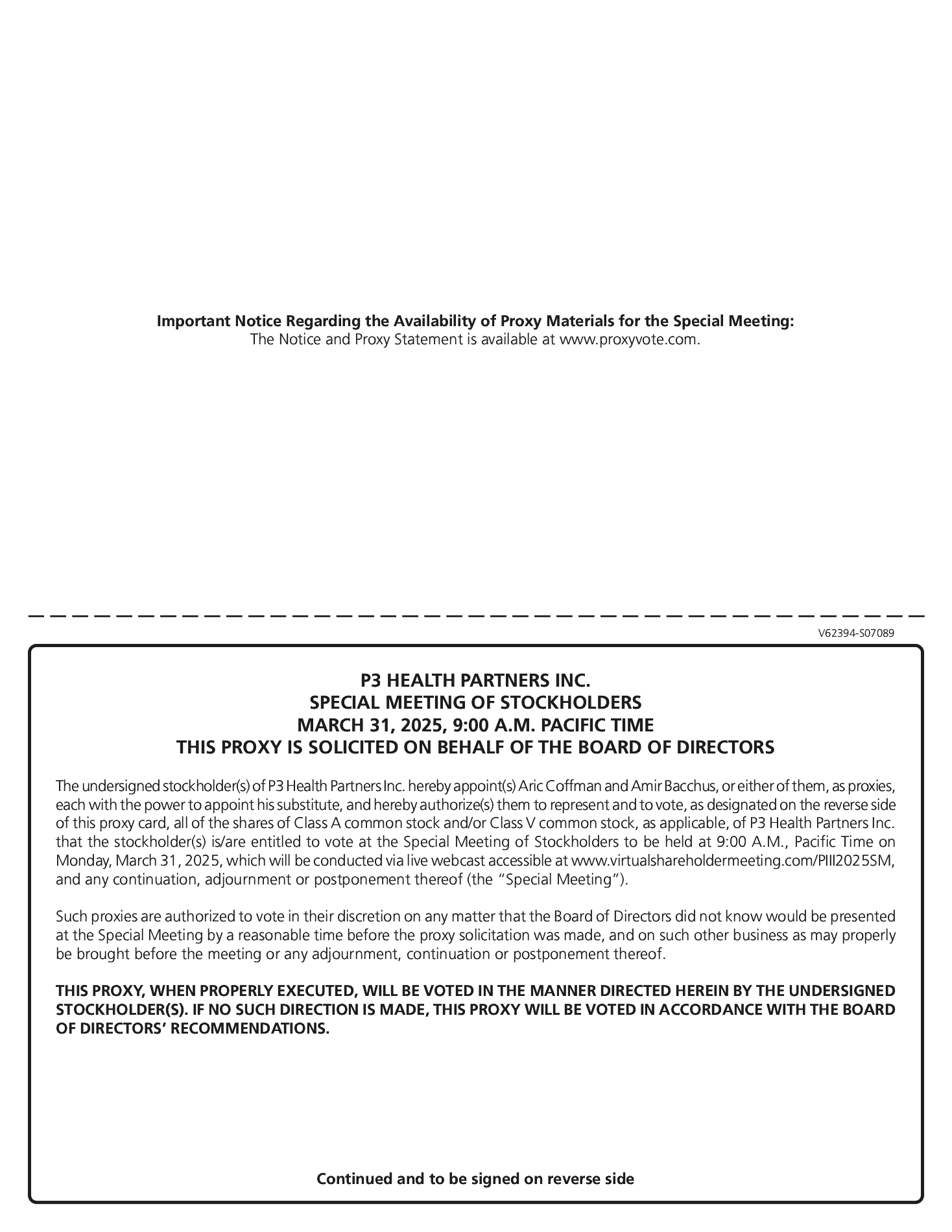(14)
| Based on the Schedule 13D/A filed with the SEC on January 31, 2025 by (i) Chicago Pacific Founders UGP, LLC (“Founders UGP”), (ii) Chicago Pacific Founders GP, L.P. (“Founders GP”), (iii) Chicago Pacific Founders Fund, L.P. (“Founders Fund LP”), (iv) Chicago Pacific Founders Fund-A, L.P. (“Fund-A”), (v) Chicago Pacific Founders Fund-B, L.P. (“Fund-B”), (vi) VBC Growth SPV, LLC (“VBC”), (vii) Chicago Pacific Founders UGP III, LLC (“Founders UGP-III”), (viii) Chicago Pacific Founders GP III, L.P., (ix) CPF III PT SPV, LLC (“SPV III”), (x) CPF III-A PT SPV, LLC (“SPV III-A”), (xi) VBC Growth SPV 3, LLC (“VBC 3”) and information known to the Company. Includes (i) 98,082,332 shares of Class A common stock held by Founders Fund LP, of which 89,183,984 shares are issuable upon redemption or exchange of P3 LLC Units and Class V common stock, 4,223,621 shares are shares of Class A common stock currently held, 3,813,578 shares are issuable upon exercise of the Common Warrants (as defined herein) and 861,149 shares are issuable upon exercise of the Pre-Funded Warrants (as defined herein), (ii)2,085,333 shares of Class A common stock held by Founders GP, all of which are issuable upon redemption or exchange of P3 LLC Units and Class V common stock, (iii) 3,387,493 shares of Class A common stock held by Fund-A, of which 3,205,926 shares are shares of Class A common stock currently held, 148,120 shares are issuable upon exercise of the Common Warrants and 33,447 shares are issuable upon exercise of the Pre-Funded Warrants, (iv) 6,431,080 shares of Class A common stock held by Fund-B, of which 6,042,090 shares are shares of Class A common stock currently held, 317,333 shares are issuable upon exercise of the Common Warrants and 71,657 shares are issuable upon exercise of the Pre-Funded Warrants, (v) 128,400,042 shares of Class A common stock held by SPV III, of which 43,336,854 shares are shares of Class A common stock currently held, 57,814,988 shares are issuable upon exercise of the Common Warrants and 27,2478,200 shares are issuable upon exercise of the Pre-Funded Warrants, (vi) 38,651,137 shares of Class A common stock held by SPV III-A, of which 12,895,750 shares are shares of Class A common stock currently held, 17,434,320 shares are issuable upon exercise of the Common Warrants and 8,321,067 shares are issuable upon exercise of the Pre-Funded Warrants, (vii) 640,000 shares of Class A common stock currently held by Founders UGP-III, (viii) 429,180 shares of Class A common stock issuable upon exercise of warrants held by VBC and (ix) 71,406,480 shares of Class A common stock issuable upon the exercise of Common Warrants held by VBC 3. Included in the number of shares of Class V common stock and Class A common stock are 8,224,897 shares of Class V common stock and 723,291 shares of Class A common stock, respectively, that are being held in escrow in connection with the Class D Dispute and the Cash Preference Dispute, as applicable, and will be voted in accordance with the proportional vote totals that a matter receives by all voting securities other than those being held in escrow. Each of Founders Fund LP, Founders GP, Fund-A, Fund-B, SPV III, SPV III-A, VBC and VBC 3 (collectively, the “CPF Holders”) may not exercise any portion of the Common Warrants or Pre-Funded Warrants which would result in the aggregate number of shares of Class A common stock and Class V common stock held by the CPF Holders and their affiliates to exceed 49.99% of the total number of issued and outstanding shares of Class A common stock and Class V common stock immediately after giving effect to the exercise. Founders UGP, is the general partner of Founders GP, which is the general partner of each of Founders Fund LP, Fund-A, Fund-B and VBC. Founders UGP-III is the general partner of Chicago Pacific Founders GP III, L.P., which is the manager of each of SPV-III, SPV III-A and VBC 3. Founders UGP and Founders UGP III are managed by Mary Tolan, Lawrence Leisure and Vance Vanier. None of Mary Tolan, Lawrence Leisure or Vance Vanier are deemed beneficial holders of any of the securities of the Company held by the CPF Holders. The business address for the reporting persons is 980 North Michigan Avenue, Suite 1998, Chicago, IL 60611 |


